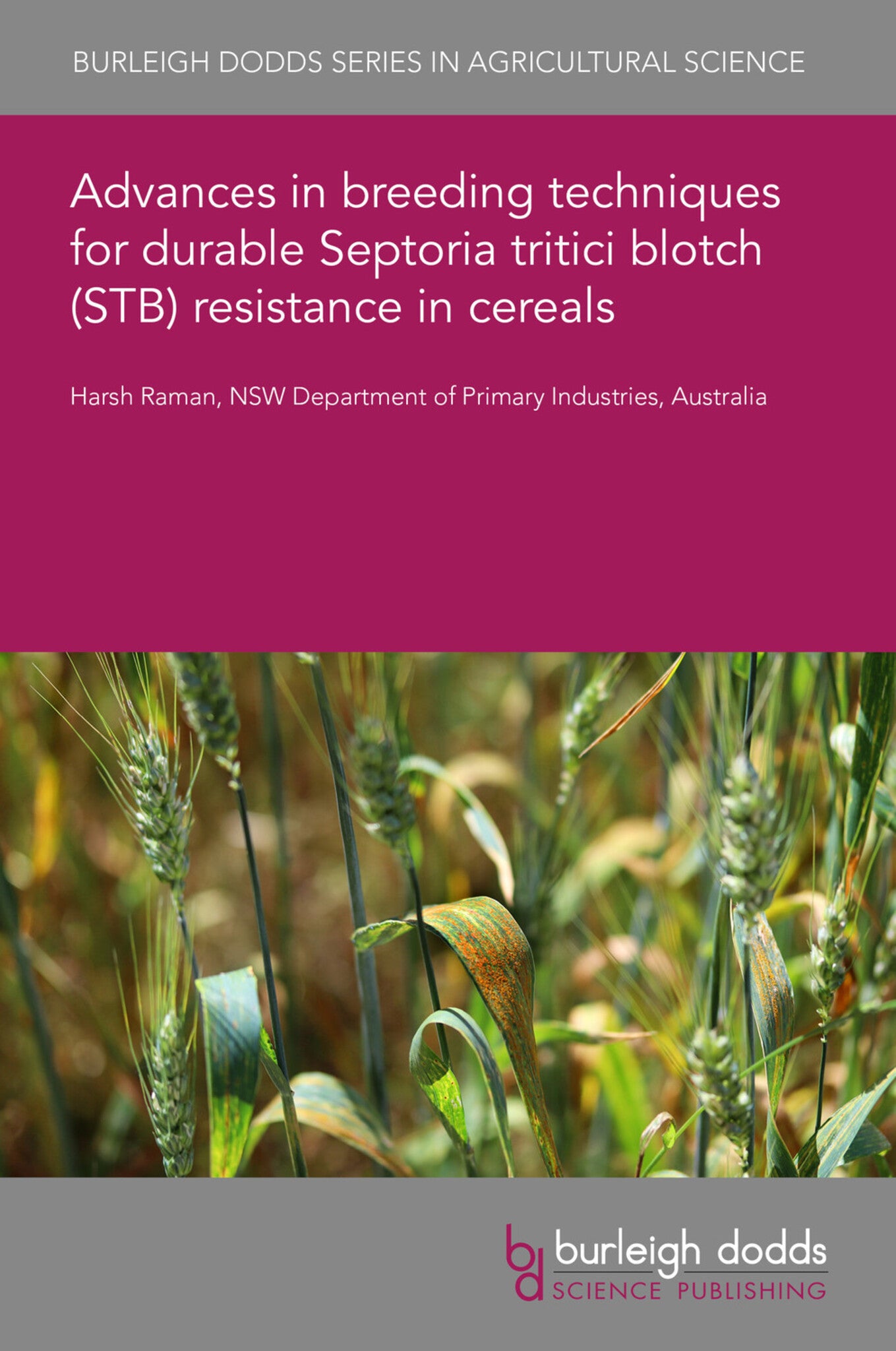We're sorry. An error has occurred
Please cancel or retry.
Advances in breeding techniques for durable Septoria tritici blotch (STB) resistance in cereals

Some error occured while loading the Quick View. Please close the Quick View and try reloading the page.
Couldn't load pickup availability
- Format:
-
18 October 2021


TECHNOLOGY & ENGINEERING / Agriculture / Agronomy / Crop Science, Agronomy and crop production, TECHNOLOGY & ENGINEERING / Agriculture / Sustainable Agriculture, TECHNOLOGY & ENGINEERING / Pest Control, Sustainable agriculture, Pest control / plant diseases

1 Introduction 2 Challenges in achieving durable resistance: qualitative and quantitative resistance 3 Molecular marker technologies for genetic mapping of Septoria tritici blotch resistance genes 4 Ways of increasing durability of resistance: planting of varietal mixtures 5 Ways of increasing durability of resistance: deployment of qualitative resistance genes 6 Ways of increasing durability of resistance: pyramiding of qualitative and quantitative resistance genes 7 Ways to increase durability of resistance: manipulation of plant architecture genes and deployment of multiple resistance loci 8 Marker-assisted selection (MAS) and genomic selection (GS) for Septoria tritici blotch resistance breeding 9 The use of genetic transformation and gene editing techniques 10 Conclusion and future trends 11 References



